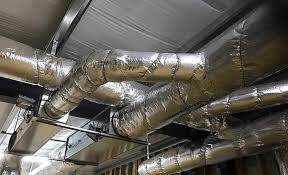AeroSeal Duct Sealing
STAY COZY, SAVE MONEY
Did you know that the average home loses 20% - 40% of its heated (and cooled) air through leaks, holes, and poorly connected ducts?
The result is higher utility bills and difficulty keeping the house comfortable, no matter how the thermostat is set.
It's common sense, seal the leaks and reduce your heating bill!
Too many people have told us that they just replaced their furnace or heat pump and it didn't make any difference in their heating. That's likely because the vents are leaking.


HOW IT WORKS
KW Energy specializes in a patented process that seals excessive duct leaks from the inside of the ducts, increasing the comfort level and energy-efficiency of your home.
Our certified team ensures that your air ducts are properly sealed to prevent energy waste, ultimately helping you save on utility bills.
The Aeroseal process is a non invasive technology for sealing leaks in ductwork in both residential and commercial buildings that uses a patented, non-toxic aerosol sealant. The duct system is pressurized, which drives sealant particles directly into leaks and seals them from the inside without coating the entire duct. The whole process only takes 2-3 hours in a typical home and is guaranteed to last at least 10 years.
Step 1:
Prep of the ductwork
Protect vital equipment and create pressure inside the ductwork
All registers are blocked or taped to pressurize the ductwork. Vital components, such as furnaces, coils, smoke detectors, and other sensors, are protected to prevent contact with the sealant. The supply and return duct systems are typically sealed separately.

Step 2:
Connect the Aeroseal Equipment
Attach to the ductwork and run a pretest
The Aeroseal equipment is connected to the duct system through plastic lay-flat tubing, either via an existing register or an access hole in the ductwork. A pretest is conducted to measure initial leakage, like a Duct Blaster test. These results are used in the post-seal report to verify the seal's effectiveness and estimate the time required for sealing.

Step 3:
Seal the Ductwork
Inject sealant from the inside the ductwork, sealing only where needed
The equipment now begins spraying sealant directly into the duct system. Our non-toxic sealant is atomized and sprayed into the lay flat tubing where it’s exposed to heated air, removing moisture from the sealant make it temporarily sticky, allowing it to collect in cracks and gaps in the ductwork.
The sealant slowly builds up overtime, collecting onto itself, like the platelets in your blood after a scrape, until the gap is sealed. The entire process is monitored by our proprietary software, making automatic adjustments to pressure and flow rate to optimize effectiveness.

Step 4:
Certify the Results
Verify final duct leakage and pack up equipment
When the target leakage rate is reached, the equipment is turned off, and any access holes are patched. Tape and blockers are removed, and the HVAC system is restored to normal operation. A detailed seal report is generated, comparing the before-and-after leakage rates to confirm effectiveness. Click here to see a sample report.


